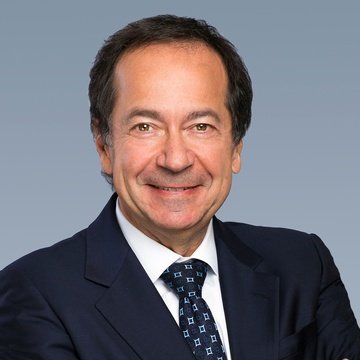John Paulson: The Life of a Hedge Fund Titan

John Paulson is a renowned American hedge fund manager, best known for his spectacularly successful bet against the U.S. housing market in the mid-2000s. His insightful prediction and subsequent financial gain during the subprime mortgage crisis cemented his reputation as one of the most astute investors of his time.
Early Life and Education
John Alfred Paulson was born on December 14, 1955, in Queens, New York City. He grew up in a middle-class family, with his father working as the chief financial officer at a financial services firm. Paulson’s early interest in business and finance was evident, setting the stage for his future career.
Paulson attended New York University’s College of Business and Public Administration, graduating with a degree in finance. He then earned an MBA from Harvard Business School in 1980, where he graduated as a George F. Baker Scholar, an honor awarded to the top 5% of the graduating class.
Career Beginnings
After completing his education, Paulson started his career at the Boston Consulting Group, where he gained valuable experience in corporate strategy and management consulting. He later moved into investment banking, working at firms like Bear Stearns and Odyssey Partners.
In 1994, Paulson founded Paulson & Co., a hedge fund initially managing $2 million. His firm focused on merger arbitrage, making profits by trading stocks of companies involved in mergers and acquisitions.
The Big Short
Paulson’s career-defining moment came during the mid-2000s when he identified significant weaknesses in the U.S. housing market. He recognized that the growing market for subprime mortgages was unsustainable and poised for collapse. In 2007, Paulson & Co. began shorting subprime mortgage-backed securities, betting that their value would plummet.
This bold move paid off immensely. When the housing market collapsed, Paulson’s funds made billions of dollars. In 2007 alone, his firm earned approximately $15 billion, with Paulson personally taking home $4 billion. This feat made him a legend in the financial world and was immortalized in Michael Lewis’s book “The Big Short” and the subsequent film adaptation.
Investment Philosophy
Paulson is known for his contrarian investment style and meticulous research. He often seeks out market inefficiencies and makes bold bets that go against conventional wisdom. His success with the subprime mortgage short was a prime example of his ability to see opportunities where others did not.
Philanthropy
Beyond his investment successes, Paulson is also a committed philanthropist. In 2009, he signed the Giving Pledge, committing to donate the majority of his wealth to charitable causes. He has made substantial donations to various institutions, including New York University, Harvard University, and the Central Park Conservancy.
Personal Life
John Paulson is married to Jenny Zaharia, and they have two daughters. Despite his wealth, Paulson is known for leading a relatively private life. He enjoys playing tennis and is involved in several philanthropic activities, often focusing on education, health, and community development.
Legacy and Influence
John Paulson’s impact on the hedge fund industry and the broader financial markets is significant. His unprecedented success during the financial crisis showcased the importance of thorough research, risk management, and the willingness to make bold moves. His story continues to inspire many in the investment community.
Conclusion
John Paulson’s journey from a middle-class upbringing in Queens to becoming one of the most successful hedge fund managers in history is a testament to his intelligence, foresight, and dedication. His legendary bet against the housing market crisis not only secured his place in financial history but also highlighted the critical importance of vigilance and skepticism in investing. As a philanthropist, his contributions continue to benefit society, further solidifying his legacy both as a financial titan and a compassionate benefactor.



